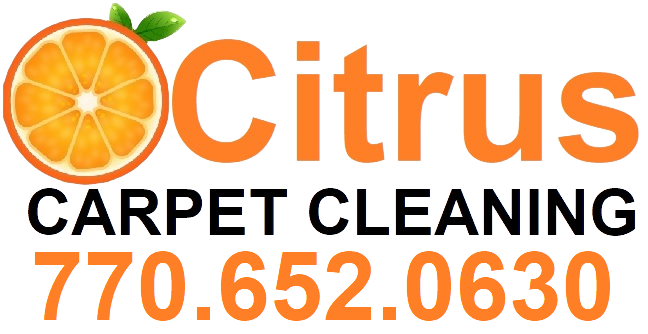That sticky or crunchy spot on your carpet isn't just an eyesore; it's a trap for future dirt. To get soap out of carpet, you have to dissolve the residue, not just scrub it deeper into the fibers.
The quick-and-dirty fix? Gently blot the area—never, ever rub—and apply a 50/50 solution of white vinegar and water. Rinse it by blotting with a clean, damp cloth, and you're already on the right track.
Why Soap Residue Is a Dirt Magnet
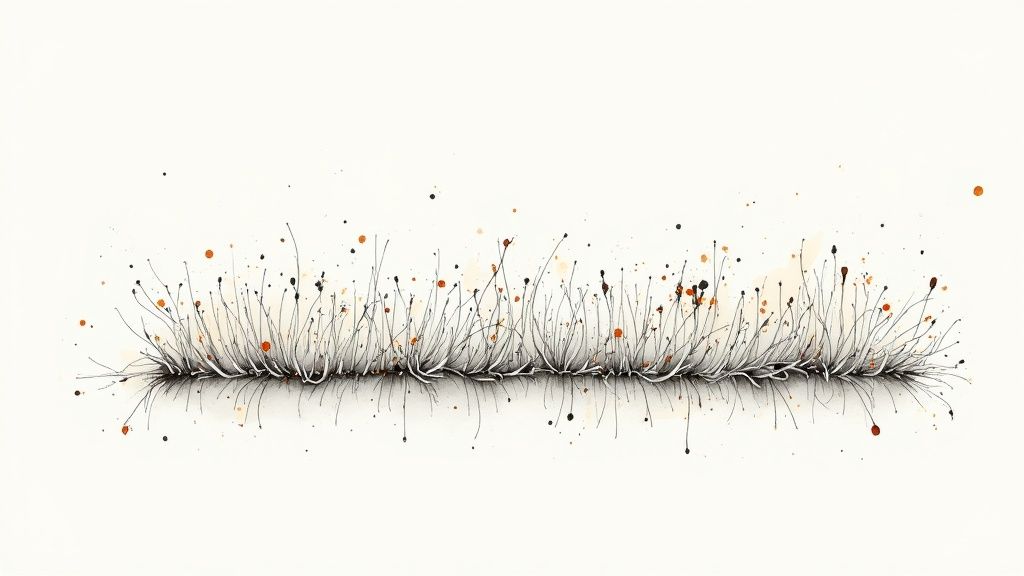
Have you ever cleaned a spill, only to find that the "clean" spot looks darker and dirtier a few weeks later? That’s the classic sign of leftover soap residue. It's a common mistake. Unlike simple dirt that vacuums right up, soap clings to carpet fibers, creating a tacky surface that grabs onto every speck of dust, pet hair, and soil tracked into your home.
This sticky situation turns a small, one-time problem into a recurring one. The residue essentially becomes a magnet for grime, making that spot a focal point for discoloration. If you're curious about the bigger picture, understanding how liquid spills can affect flooring of all types can offer some valuable insights.
The Science Behind Sticky Soap Spots
Soap's primary job is to attract oil and dirt. That's great for washing your hands, but when it's not completely rinsed out of your carpet, it just keeps doing its job—right there on your floor.
The challenge is that soap binds directly with the fibers, making it nearly impossible to get out with water alone. This is where liquid carpet cleaners come in; they help lift these residues without causing damage. It's no surprise the market for convenient spray cleaners has grown so much—people want quick methods that prevent this exact kind of soap buildup. You can learn more about the latest trends in carpet cleaning products from this detailed market report.
Key Takeaway: The goal isn't just to clean the initial spill but to completely remove the cleaning agent itself. If you don't, that spot is guaranteed to reappear, and it's often worse than before.
Quick Action Plan for Common Soap Spills
Not all soap spills are created equal. Different types require a slightly different immediate response to stop them from setting.
Here’s a quick guide to get you started on the right foot.
| Type of Soap Spill | First Step (Blot or Scrape) | Recommended Initial Solution |
|---|---|---|
| Laundry Detergent | Blot immediately with a dry cloth | Vinegar and water solution |
| Dish Soap | Blot with a dry cloth | Cold water rinse, then vinegar solution |
| Bar Soap (Dried) | Scrape gently with a dull knife | Vacuum loose bits, then treat with vinegar |
Think of this table as your emergency cheat sheet. The initial moments after a spill can make all the difference between a simple cleanup and a permanent stain.
Putting Together Your Soap Removal Toolkit
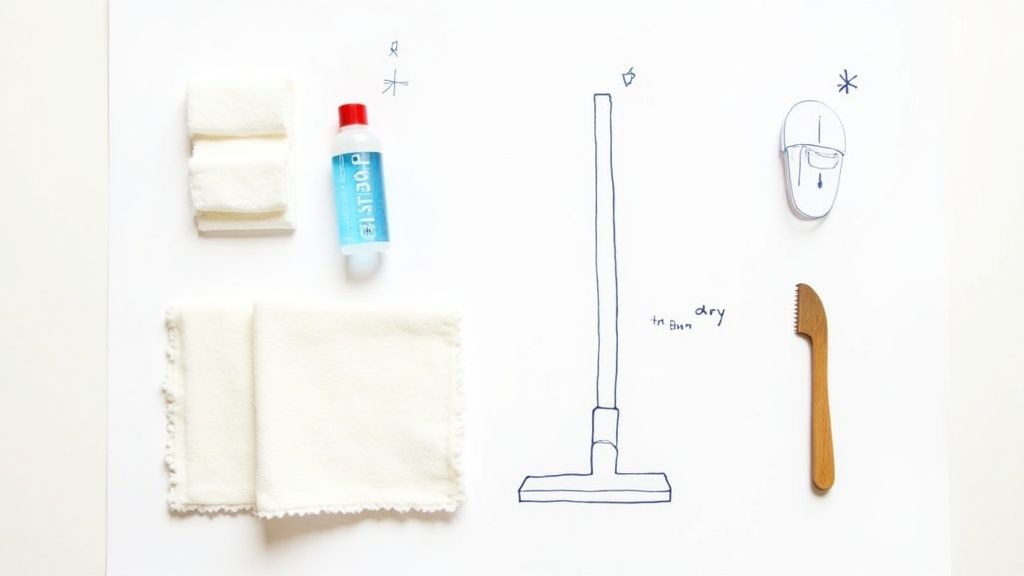
Before you even think about tackling that soap spill, let's get your gear in order. Having everything you need on hand turns a potential panic into a totally manageable task. Trust me, when soap starts seeping into your carpet fibers, speed is your best friend.
Think of this as your go-to spill response kit. I’ve seen it happen too many times—someone grabs the nearest colored dish towel in a hurry, and suddenly they're dealing with a soap stain and a dye transfer. A little prep work now saves a massive headache later.
What You'll Actually Need
You don't need a bunch of fancy, expensive gadgets. In fact, you've probably got most of this stuff sitting around the house already. The goal here is simple: gather tools that will lift out the gunk without wrecking your carpet.
Here's your must-have checklist:
- White, Absorbent Cloths: Microfiber towels are perfect for this. And yes, they absolutely have to be white. It’s non-negotiable if you want to avoid bleeding color all over your floor.
- Spray Bottle: This lets you apply your cleaning solution in a fine, even mist. The last thing you want to do is completely saturate the area, and this gives you total control.
- Wet/Dry Vacuum: This is the real MVP. It’s the single best tool for sucking up all that soapy water, which is the secret to preventing that stiff, crunchy spot that soap residue always leaves behind.
- Dull Butter Knife or Spoon: Got some dried, crusty soap on the surface? This is your tool for gently scraping it away before you add any liquid to the mix.
My Pro Tip: Don't just hunt for these items when disaster strikes. Grab a small caddy or a bin, toss everything in, and stash it under the sink. When a spill happens, you can just grab it and go. This simple bit of organization makes all the difference in the world.
A Practical Guide to Getting Soap Out of Your Carpet
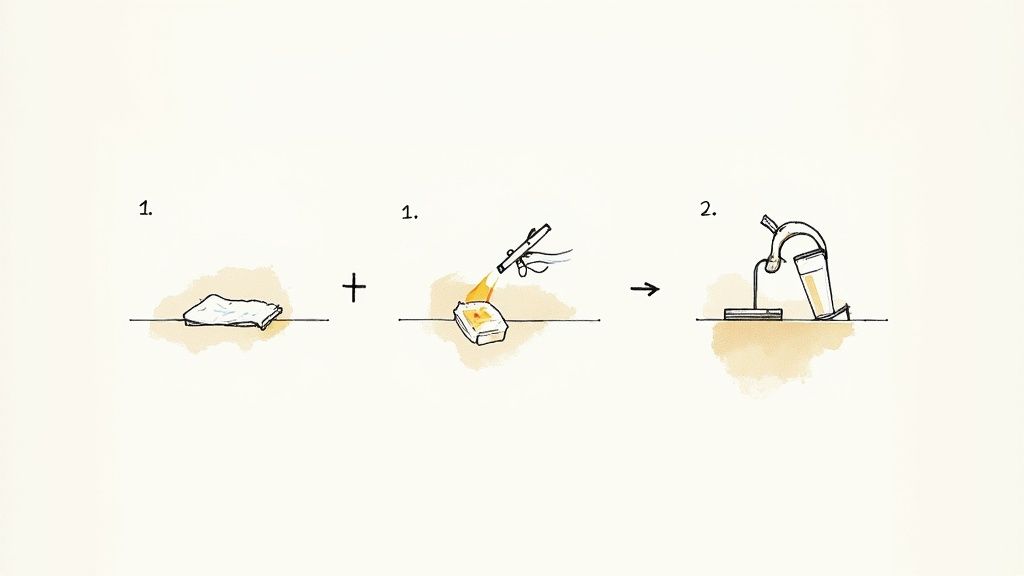
Alright, you've got your tools, so let's get that soapy mess out of your carpet fibers for good. The real secret here isn't about scrubbing like a maniac. It's a patient process: dissolve, lift, and extract. People who rush this end up with that stiff, crunchy spot that becomes a magnet for new dirt.
First things first, get rid of any soap you can see. If the spill dried into a crusty patch, take your butter knife and gently scrape it off. Once you've broken up the solid bits, vacuum them up. You want a clear field before moving on to the real work.
The Dissolve and Blot Method
With the surface clear, it's time to go after the gunk stuck deep in the fibers. Mix up a simple but surprisingly powerful solution: 50% white vinegar and 50% warm water. Pop that in your spray bottle. The vinegar's acidity is a champ at breaking down alkaline soap residue, and it's safe for most carpet types.
Lightly mist the soapy area. The goal is damp, not soaked. If you create a swimming pool on your floor, you risk damaging the carpet backing and the padding underneath, which is a whole other world of problems.
Now, grab one of your clean, white cloths and press it firmly into the stain. This is the blotting part, and honestly, it’s the most critical step. Don't be afraid to stand on the cloth to really apply some pressure. You're literally transferring the dissolved soap from the carpet to the cloth. Whatever you do, resist the urge to scrub back and forth—that’s a fast track to frayed, permanently damaged carpet fibers.
Expert Tip: Every few seconds, lift the cloth to see what you’re pulling up. You should see the soapy residue transferring over. Once a section of the towel is dirty, move to a clean part or just grab a fresh one. You don't want to put the grime right back where you found it.
Rinsing and Final Extraction
After you've blotted up as much of the soap-vinegar mix as you can, it's time for a quick rinse. Empty out your spray bottle, give it a wash, and fill it with plain, clean water. Mist the area again, just lightly, to dilute any leftover vinegar and soap.
Take another fresh, dry cloth and repeat the whole blotting dance. This step is key because you're now removing the cleaning solution itself, making sure nothing sticky gets left behind. By the way, learning how to clean carpet stains with vinegar is a great skill to have for all sorts of other household messes.
For the final knockout punch, bring out the wet/dry vacuum. A few slow passes over the damp spot will pull out the last bits of moisture and residue way more effectively than blotting alone ever could. As the spot dries, use your fingers to gently fluff the carpet fibers back up, helping them stand tall and restoring the carpet’s texture.
While this trick is great for little accidents, bigger or older problems might need a different approach. Check out our guide on how to remove tough carpet stains for more heavy-duty solutions. It's no surprise that the carpet cleaning market is growing by 4.5%-5.3% each year; better methods for tackling issues like soap buildup are always being developed.
Dealing With Tough and Set-In Soap Stains
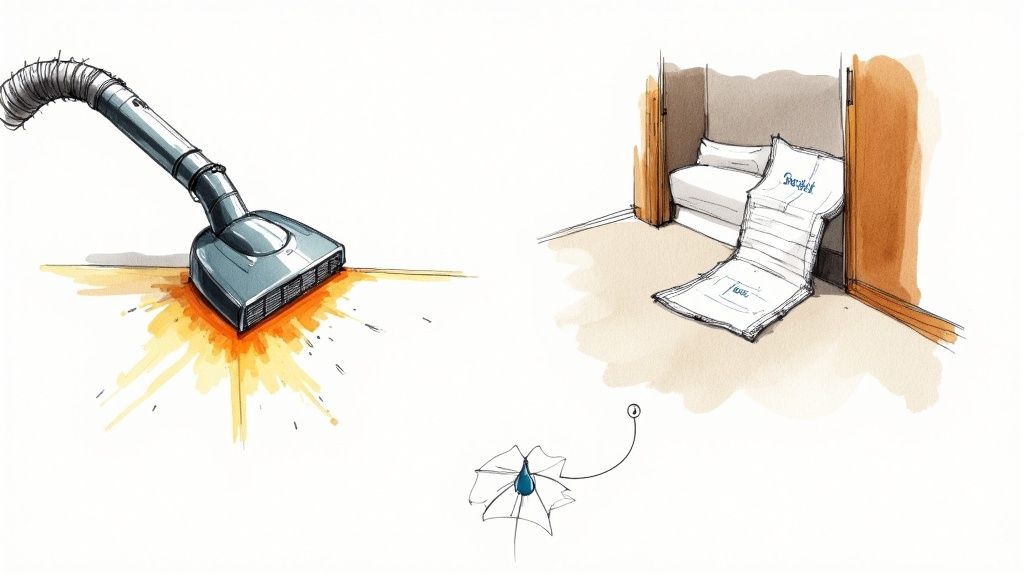
Sometimes, that simple vinegar and water solution just isn't going to cut it. I've seen it a hundred times: a big, old laundry detergent spill that’s been sitting for weeks, becoming one with the carpet fibers. It gets crusty and seems impossible.
When you're up against a stain that has well and truly set in, it’s time to bring out the bigger guns. These are the more powerful techniques designed to break down those stubborn soap compounds that simpler solutions can't touch. Just remember, with greater power comes greater responsibility—you have to be careful not to damage your carpet in the process.
Advanced Removal Techniques
Before you even think about trying these methods, here’s the golden rule: test it on a hidden area of your carpet first. A spot inside a closet or under the sofa is perfect. This little step is your insurance policy against accidentally discoloring or damaging your carpet.
-
Rubbing Alcohol for Tough Residue: Got a particularly greasy or waxy soap stain? Rubbing alcohol can be a fantastic solvent. Just lightly dampen a clean, white cloth with isopropyl alcohol and gently blot the stain. Whatever you do, don't pour it directly on the carpet. The alcohol is great at dissolving the bond between the soap and the carpet fibers, making it much easier to lift out.
-
Steam Cleaning for Deep Dissolving: A steam cleaner is probably your most effective tool for a set-in soap disaster. The combination of intense heat and moisture works wonders to dissolve and loosen even the most baked-on residues. You’ll want to move the steam cleaner slowly over the area, giving the steam time to penetrate deep down, then use the extraction function to pull all that soapy water right out.
Why This Works: The main reason these advanced methods are necessary is because old soap residue actually bonds chemically with carpet fibers over time. Heat and solvents are the only things that can effectively break that bond so the soap can be extracted.
Thoroughly rinsing the area afterward is non-negotiable. Any sticky residue left behind becomes a magnet for dirt. This is a common piece of consumer knowledge that has helped shape the North American carpet cleaning market, which was valued at around USD 1.13 billion in 2023.
For stains that go beyond just soap, you might want to check out our complete guide on removing set-in carpet stains for some additional pro strategies.
How To Prevent Future Soap Buildup
Knowing how to get soap out of your carpet is a great skill to have, but let's be honest, it's way better to avoid the problem in the first place. A little proactive care goes a long way, and it usually starts with how you’re using your cleaning products—especially in those rental carpet cleaning machines.
One of the biggest mistakes people make is thinking more soap equals a cleaner carpet. I see it all the time. In reality, the opposite is true. Using too much soap is the #1 cause of that sticky, dirt-attracting residue that makes your carpets look dingy again in no time. Stick to the amount recommended on the machine’s instructions, or even a little less. Your carpet will thank you.
The Rinse Cycle Is Your Best Friend
If you rent or own a carpet shampooer, do yourself a huge favor: never, ever skip the final rinse cycle. It's not an optional step. That cycle is specifically designed to flush out all the leftover cleaning solution you just put down.
Just run the machine over the whole area one last time with only hot water in the tank. This simple action pulls up the extra soap and leaves your carpet fibers soft and residue-free, not stiff and crunchy.
Shifting to a Maintenance Mindset
Instead of waiting for a disaster and then reacting, a simple maintenance mindset will keep your carpets looking fresh for so much longer. This means regular vacuuming and reaching for gentler cleaning methods first. You'd be surprised how often a little water and some blotting with a microfiber towel is all you need for a minor spot.
Pro Tip: When you're buying carpet shampoos or spot treatments, look for products labeled "low-residue" or "free and clear." These are made to rinse away cleanly, which seriously cuts down the risk of leaving behind that sticky film.
It's also worth looking into professional services that use different techniques. Some homeowners have had great results by learning about dry cleaning for carpets, a method that uses very little moisture and specialized compounds. This avoids the deep saturation that often leads to soap residue in the first place.
At the end of the day, the secret to a perpetually clean carpet isn't just about intense deep cleans. It's about consistent, light maintenance.
Your Top Carpet Soap Questions, Answered
Even when you do everything right, some situations can leave you stumped. Let's dig into a few of the most common questions I hear about getting soap out of carpet. A little extra know-how can help you tackle any curveball a spill throws your way.
From water temperature to surprise dye stains, a few key insights make all the difference. Knowing these answers will give you the confidence to adapt your approach and nail that perfect, residue-free finish every time.
Can I Use Hot Water to Get Soap Out of My Carpet?
Generally, yes. Hot water is a champ at dissolving stubborn, greasy soap residue. For the vast majority of synthetic carpets out there—like nylon or polyester—it's perfectly safe.
But, you have to be careful with natural fibers. If you have a wool carpet, for instance, high heat can cause it to shrink or even make the colors bleed. That's a headache you don't need.
My Rule of Thumb: When in doubt, start with warm water. Always, and I mean always, do a quick spot test in a hidden area first. Check inside a closet or under a big piece of furniture before you go all-in on the main stain. This simple check stops a small problem from turning into a disaster.
Why Does My Carpet Feel Stiff After Cleaning?
That stiff, crunchy feeling is the number one tell-tale sign of leftover soap residue. It's the carpet's way of telling you that the rinsing step wasn't quite thorough enough. What you're feeling is a sticky film that hardened as it dried.
And guess what? That sticky residue is a dirt magnet. It's the reason spots mysteriously reappear a few days or weeks after you thought you cleaned them.
The fix is pretty straightforward: you just need to rinse it again. Lightly mist the stiff area with plain water and blot it up with a clean, dry towel. Even better, use a wet/dry vac to really pull all that moisture (and leftover soap) out. You might need to do it two or three times, but I promise your carpet will be soft and truly clean once it's fully dry.
What if the Spill Was From a Colored Soap?
Okay, colored soap is a double-whammy. You're fighting two battles at once: the sticky soap residue and a potential dye stain. The trick here is to tackle them one at a time.
- Get the soap out first. Use your vinegar and water solution to break down and lift all that sticky gunk. Blot like your life depends on it until you're confident the soap itself is gone.
- Now, attack the color. If a colored tint is still hanging around, you can treat it with a gentle oxidizer. Mix a solution of one part hydrogen peroxide to ten parts water.
- Dab this onto the stain, let it work its magic for up to an hour, and then blot it with a clean, damp cloth. Just remember, hydrogen peroxide can have a mild bleaching effect, so doing a spot test first isn't just a suggestion—it's absolutely essential.
At Citrus Carpet Cleaning Buford, we believe there’s a better way. Our citrus-based, low-moisture cleaning process uses zero soaps or shampoos, which means no sticky residue is ever left behind. The result? Your carpets stay cleaner much longer and are dry in just 1-2 hours. For a clean you can actually trust, check us out at https://citruscarpetcleaningatlanta.com.
